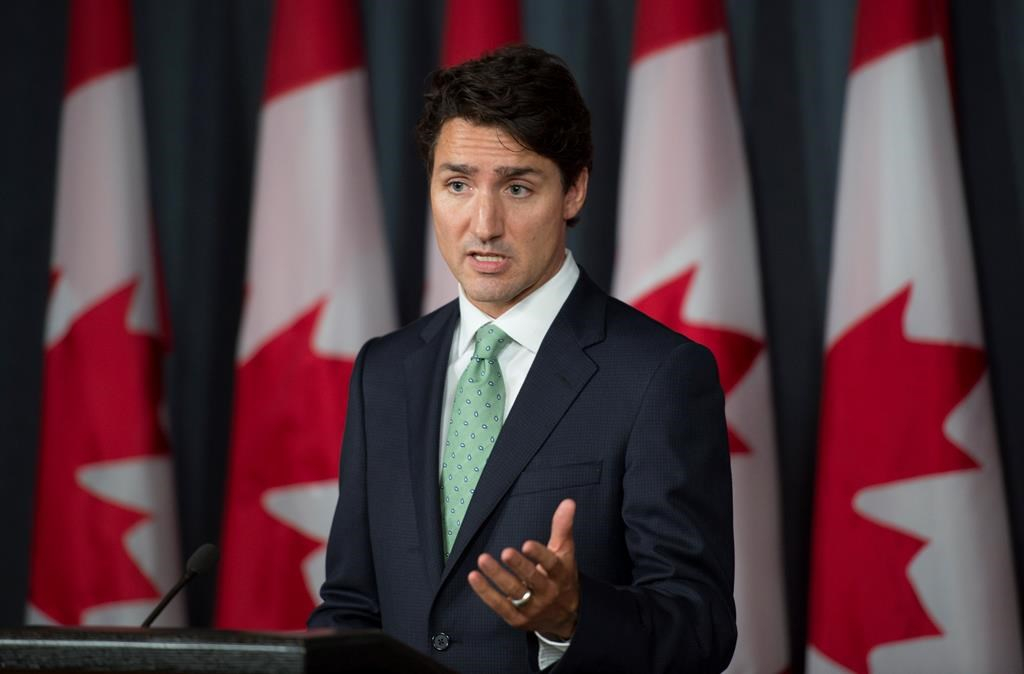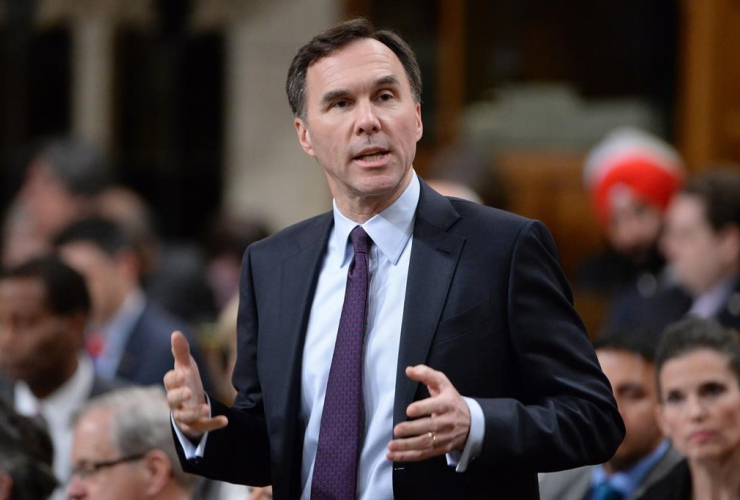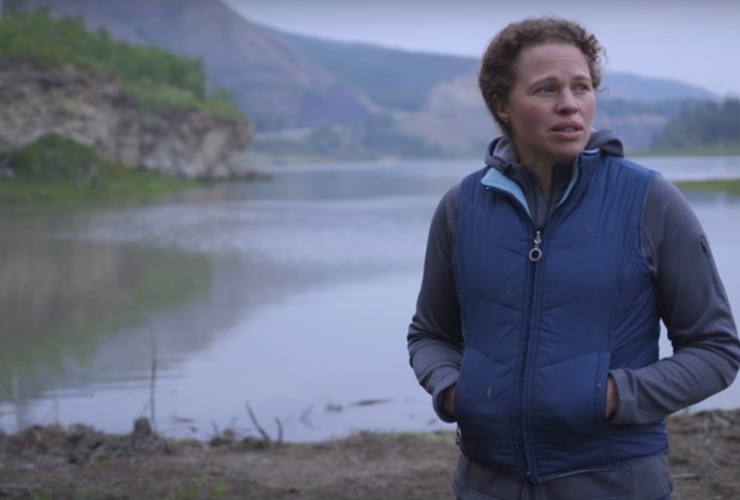The Trudeau government intends to use its new infrastructure bank to finance a "nation-building effort" to build clean electricity systems between provinces and territories.
But does that mean the decades-old dream of a pan-Canadian power grid is finally about to become a reality? Not likely.
Sergio Marchi, president of the Canadian Electricity Association, says the technological know-how to transmit electricity for vast distances across the country doesn't yet exist and, even if it did, would be prohibitively expensive. More likely, Marchi believes the bank could be used to develop regional energy "interties" — connections between two electricity systems — between provinces.
For instance, he said it could finance the infrastructure needed for British Columbia to transmit its abundant hydro power to Alberta, which is trying to shift off coal-fired electricity, or for Manitoba to transmit its hydro to Saskatchewan, which gets more than 40 per cent of its energy from coal-fired power plants.
Similarly, he said more of Quebec's hydro could be transmitted to Ontario or to the Atlantic provinces.
"I think regionally and picking our spots, I think that's very doable," Marchi, a former federal cabinet minister, said in an interview. "And so we already think that the federal and provincial governments on some of these interties are looking at that very thing and we're expecting the budget to unveil that."
Creating a national energy grid, enabling some provinces' surplus hydro power to be transmitted across the country instead of south to the United States, has long been touted as a nation-building project, a way to strengthen east-west ties that bind Canada together and to counteract the pull of north-south ties.
The possibility that the federal government might be considering financing a pan-Canadian energy grid was raised Monday by Environment Minister Catherine McKenna when she announced the accelerated phase-out of coal-fired electricity by 2030 as part of the federal strategy to combat climate change.
"The Government of Canada will support this transition by using the Canada Infrastructure Bank to finance projects such as commercially viable clean energy and modern electricity systems between provinces and territories," she said in a news release.
The release included a quote from Dominic Barton, chair of the federal advisory council on economic growth, calling connecting the provinces with a clean energy system "a nation-building effort" that will position Canada to "compete for significant global investments in our power sector." Barton's growth council is one of the biggest champions of the need for an infrastructure bank.
The Trudeau government is planning to launch the bank next year, with $15 billion in direct federal investments and another $20 billion in repayable contributions, loans and loan guarantees. It hopes to leverage up to $5 in private investment for every $1 in government funding.
Government officials say no decisions have yet been made on specific projects to be financed through the bank. But asked about the possibility of using the bank to finance a national energy grid, a spokeswoman for Infrastructure Minister Amarjeet Sohi, like Marchi, talked instead about interties.
"We see great potential for the Canada Infrastructure Bank to help support green infrastructure such as intertie and commercial scale renewable energy projects," Kate Monfette said in an email.
She added that Natural Resources Canada is "in the process of evaluating strategic grid inter-connections" and that work will "help provinces prioritize their grid infrastructure decisions."
Natural Resources Minister Jim Carr has long been an advocate of an east-west power grid. But Marchi said his association has advised the minister to think instead about regional inter-connections. And in the group's discussions with Carr, McKenna and their advisers, he said it's become clear that high-level discussions on the issue are already well under way between Ottawa and the provinces.
Opposition parties have pounced on the government's plans to use the infrastructure bank to leverage private investment for major projects, predicting that investors' demand for a high rate of return will mean additional costs to build infrastructure and inevitably result in road and bridge tolls and other user fees.
But the president of the Federation of Canadian Municipalities says there are not enough details yet about how the bank will operate to be able to make such predictions.
"I don't know how anybody knows that now until we can see actually what comes out of it," Clark Somerville said in an interview.
The federation has been promised it will be consulted on the details, which are expected to be unveiled in the next federal budget in a few months, he added.
In the meantime, Somerville said municipalities welcome creation of the bank as another tool in their tool box for financing costly infrastructure projects.
Led by the federation, some 100 municipal leaders from across the country are in Ottawa this week to lobby ministers and MPs on the need to rely on municipalities' expertise in designing the second phase of promised infrastructure funding. The government is promising to devote $186 billion over the next 12 years during the second phase, which includes the infrastructure bank.
This is a much needed policy
This is a much needed policy and funding initiative. Kudos to the recent Ontario, Quebec Hydro purchase agreement. This should have been done decades ago. When we look at the Sunshine List of Ontario Hydro employees we understand why there was resistance.
i have a serious bone of contention with Prime Minister Trudeau in regards to his backing of the West Coast LNG Terminal and pipeline project from Northern BC to Prince Rupert. The natural gas for this project is sourced by Fracking, when earlier this year Fracking was stopped temporarily at Fort St. john because they had a quake tremor of 4.3 magnitude. Just 2 weeks ago in Cushing Oklahoma the city was vacated to check the structures of buildings shaken by a 6. tremor from fracking. Cushing is the Pipeline Hub and Bulk Oil Storage Capital of North America.
In 1957 when our legislature was debating how/who would build the first natural gas pipeline from Alberta to Southern Ontario and Quebec it was decided the section through the rocky terrain of Northern Ontario would be built by the Northern Ontario Pipe Line Crown Corporation then leased to Trans Canada Pipeline. Some 59 years later we have countless communities, villages and rural areas adjacent to the pipeline with NO natural gas service for heating or commercial and Industrial uses.
Some communities such as Dorion, Hurkett and Jellicoe Ontario have Compressor Stations with no residential gas supply. The towns along Lake Superiors North Shore East of Nipigon to Sault Ste. Marie have neither. Supply lines could have been installed down the plateaus from Longlac to Terrace Bay, Caramat to Manitouwadge and Hemlo, White River, Marathon etc. For a corporation that was gifted with this pipeline facility it appears they had a grab and run mentality.
Back to the some 19 LNG Terminal proposals for the coast of British Columbia, please Prime Minister Trudeau take care of your own citizens before giving our non-renewable natural gas reserves away to off-shore countries and Crown Corporations like Malaysia's Petronas.
In Western Canada Farm Taps are available to farmers for home heating and grain drying. This seems unheard of in Ontario. The Ontario Federation of Agriculture is negotiating with the Provincial government that they need access to natural gas. Their only options are propane, heating oil and electricity and are the hardest hit by energy inflation. Visitontarioruralgrowth.ca for more information about why an investment in natural gas access for rural Ontario is also vital.
All these communities without natural gas service sustain impaired air quality from countless households burning firewood. This results in increased healthcare costs from respiratory issues such as asthma.
This giveaway of public
This giveaway of public infrastructure to corporations is theft on an epic scale. While multinationals with throw a few bucks into the kitty for these projects, the markups, overruns, backhanders and "favour" from pals in office are all too familiar to taxpayers who will be rewarded with toll roads, skyrocketing costs, and having to pay back billions extra. The Liberals have done it repeatedly over the years, and their cohorts in BC and Ontario are examples of what to expect. Public services must be funded by public money, publicly tendered with full transparency, and free from any taint of scandal. It is crucial that this be stopped before the 1% get their claws any deeper into our wallets.





Comments